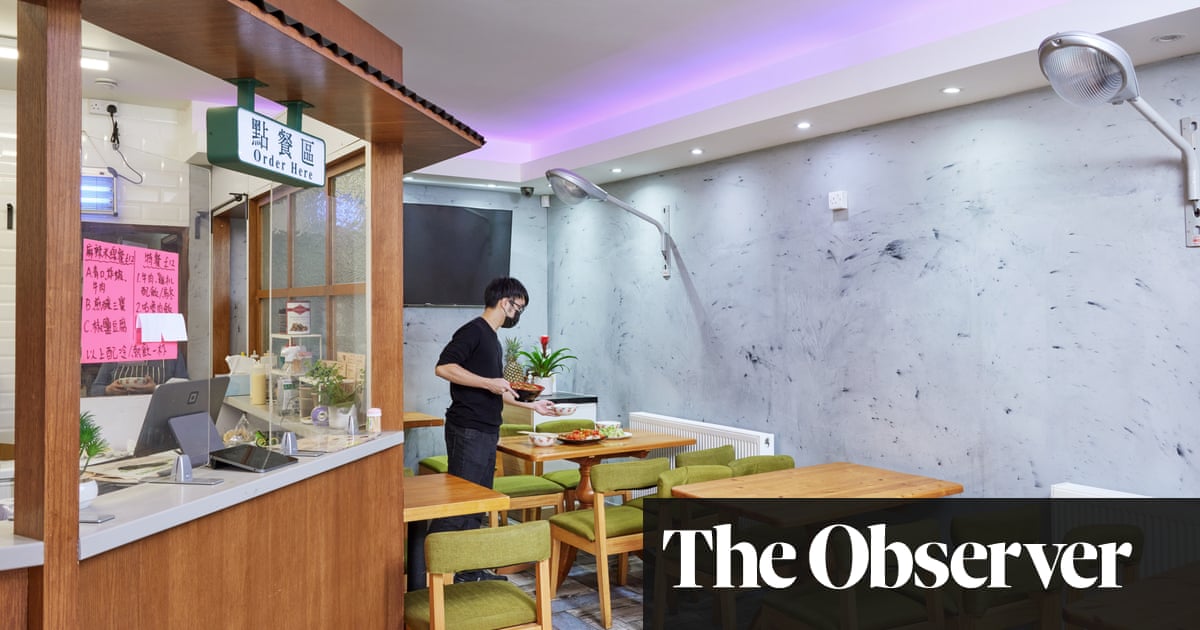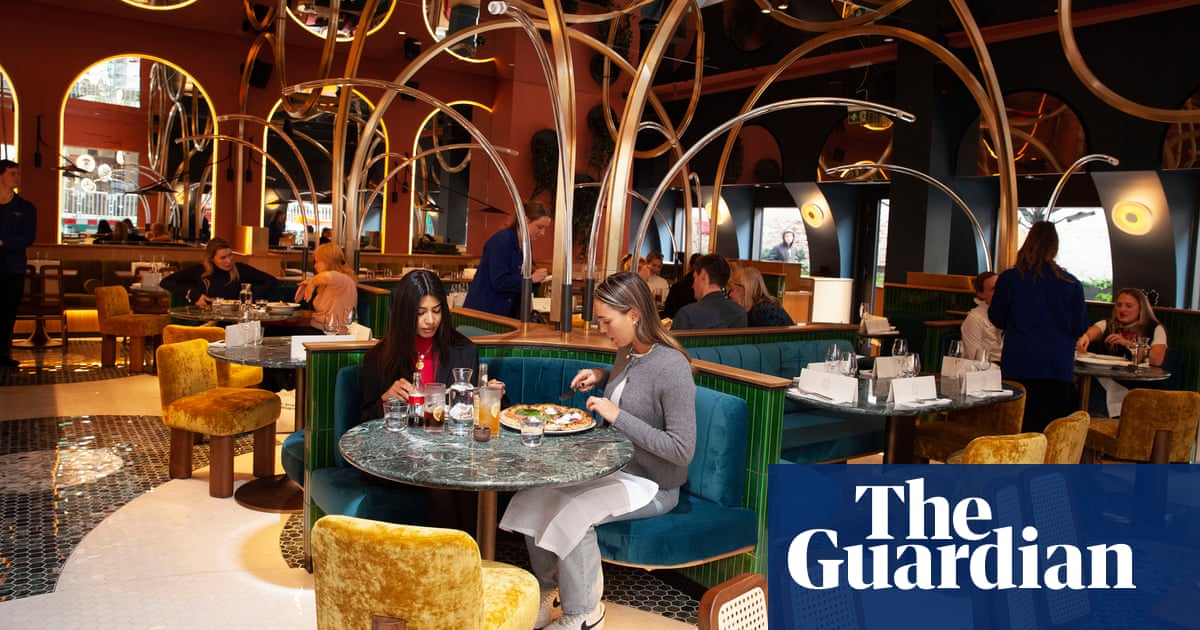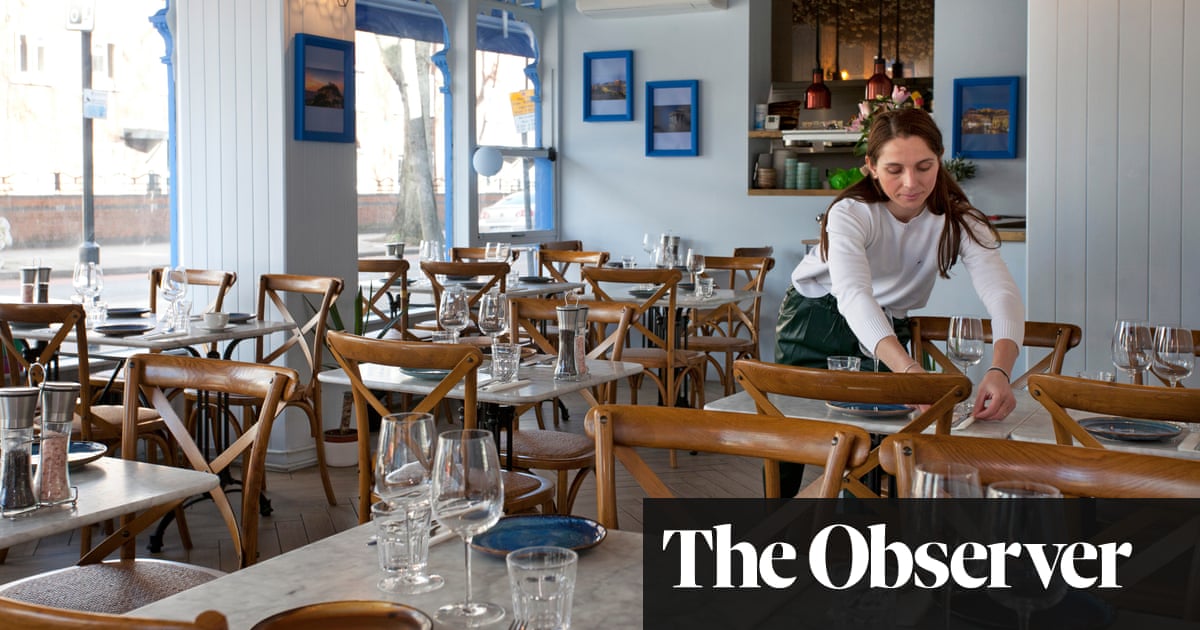
Chakana, 140 Alcester Road, Moseley, Birmingham B13 8HT (0121 448 9880). Starters £8-£10, mains £14-£22, desserts £8, wines from £24
Something odd is going on. It’s a very good kind of odd, but odd all the same. It is as if my brain, the reflective, processing part of me, is lagging far behind my tongue, the boisterous, bluntly sensing part of me. I’m being knocked sideways by the bold hit of citrus and chilli; by flavours with the brightness turned up to maximum, alongside the bash of seaweed and the softness of sesame. And then there are the dizzying visuals. The plate in front of me is a ravishing blast of crimson and green. There are lozenges of the deepest purple overlaid by lacy fronds of micro herbs. There is an awful lot going on in this plate of tuna Nikkei ceviche, and it’s all kinds of fabulous.
It has been served to me at Chakana, a Peruvian restaurant in Moseley, Birmingham, that opened two years ago. I am quietly ashamed of myself for taking so damn long to get here. The chef Robert Ortiz has serious credentials. He grew up in Peru’s Amazonian hinterland, near the Marañón River, cooking with the family matriarchs before starting to cook professionally. He moved to London where he trained at some of the city’s biggest hotels. After a stint back in Peru, he became head chef at the Peruvian restaurant Lima in London’s Fitzrovia, where he won a Michelin star.
I must step carefully here to avoid sounding like the grotesque snob I obviously am. Moseley is a vivid and dynamic place. En route from the town centre, I pass intriguing looking Yemeni and Syrian grill houses. There are other restaurants of ambition in these parts, not least Carters. Nevertheless, to find Ortiz in this part of Birmingham doing his thing in a converted bank – the private dining room is located inside the former vault, complete with reinforced door – feels like finding a gorgeous tropical flower at the base of a glowering mighty oak. The conversion is clever, a gentle take on whitewashed adobe, with vivid slabs of art on the walls.
But the real art, the most shameless gashes of colour, are obviously here on the table in front of us. It begins with a bowl of toasted and toastie corn kernels mixed with the thinnest and crispest slices of dried Jerusalem artichoke. Our waiter jokes that it’s the kind of salty bar snack designed to make you order more drinks. I think it’s the kind of bar snack designed to make you order more of the bar snack. There is a tiny tart made with the butteriest of pastries – a testament perhaps, to all that London hotel experience – filled with minced chicken, yellow chilli and ground walnuts. There is a hot potato and beef croquette, gusting meaty spiciness at us with each bite. There may well have been a couple of pisco sours to send these all on their way. We only wanted to make our waiter feel vindicated.
And then there’s that tuna Nikkei ceviche which, as our waiter tells us, with an enthusiasm borne of having spent significant time in Peru, draws on the country’s melded culinary and cultural influences. In particular it’s about the Japanese immigration into Peru in the early 20th century. They brought with them the titular Nikkei style of cooking, hence the raw tuna. But here, too, is tiger’s milk, that punchy sauce and cooking liquor of lime juice and chilli, ginger, garlic and various other things besides, depending upon who’s making it.
Another equally vivid plate brings thinly sliced, sweet and sticky raw scallop in a ricotta tiger’s milk, rendered the brightest of yellows through the application of achiote oil. It is punctuated by dots of chia seeds, like determined full stops, alongside shiny jewels of amaranth, looking like the glossiest of caviar. For the amount of work that has gone into these dishes the price tag of a tenner each is great value.
For the mains we have a pearly piece of hake seasoned by being steamed within a gossamer-thin piece of dried seaweed that has rehydrated as the fish has cooked. Underneath there is the sweet and sour of a cherry tomato and soft onion escabeche. That in turn lurks on heaps of nutty black quinoa, which recall the mustard and cress seeds we all used to sprinkle on wet tissue paper when we were kids in the hope that they might grow. And all of it comes in a limpid broth that must be spooned away. A main of slow-roasted suckling pig, which turns into shreds eagerly beneath my fork, is the encouraging darkness to the hake’s light. It rests on a mess of roasted yuca root and comes with a meaty jus flavoured with the deepest of Peruvian chocolates.
But it is an Andean potato stew that rocks me back in my seat. It is another head-turning beauty: a heap of buttercup-yellow potatoes, dried and smoked, are dotted with cubes of purple potato, and laid with green leaves, deep red flowers and black grapes. I expect it to be one of those hugely comforting, solid adventures in carbs, but there is so much more going on here. It is a journey into the savoury. It is as if each cube of potato has been cooked separately to that point where bite persists, where it tastes intensely of itself. It is the potato as love interest; it is the potato as marquee name. Given that the potato is central to Peru’s agricultural and botanical heritage this is as it should be.
We are done for, but we still must finish. There is a dollop of intense Andean chocolate mousse, spiked with purple potato wafers and sprinkled with bee pollen, which somehow manages not to be cloying and overwhelming. Then there is a white chocolate cup, filled with a custard apple mousse on top of a little dulce de leche. On top of this sits a fragile tuile sprinkled with pink sugar, as if it is time for a children’s party.
Struck by my shining positivity, one reader recently suggested I had become prone to hyperbole. Nonsense. Whatever the caricature, I am just a naturally sunny individual who looks only for the good. Certainly, if I experience the good, I damn well say so. And Chakana is very good indeed. It’s that rare thing: a genuinely exciting restaurant. Don’t miss out on the ride.
News bites
Chef Stuart Gillies, one-time chief executive of Gordon Ramsay Holdings, is to open a second restaurant after the success of the first Bank House wine bar and kitchen in Chislehurst. The new outpost, located on London Road in Sevenoaks, Kent, will be called Number Eight. As at the first, the menu is expected to be built around small plates: the likes of beetroot hummus with toasted flat bread, wild mushroom pappardelle with crispy onions and a bakewell tart to finish.
Fife-born sommelier Matilda Ruffle, who ran supper clubs with her chef husband Tom Tsappis in London, has returned to Scotland to take over the Killiecrankie House Hotel in Pitlochry. The couple are now offering an £85 tasting menu very much drawing on the locality. A sample includes dishes entitled ‘Venison, Peat and Brambles’, ‘Dripping-Fried Porridge’ and ‘Flower of Scotland’. Rather cheerily, it finishes with Sweeties. At killiecrankiehouse.com.
An analysis by CGA and AlixPartners, the data analysis company for the hospitality industry, has found that the sector lost around 1,000 sites between July and the end of September. It works out at an average of 16 closures a day, with the majority of those closures hitting independently run pubs, restaurants and bars rather than the chains.












